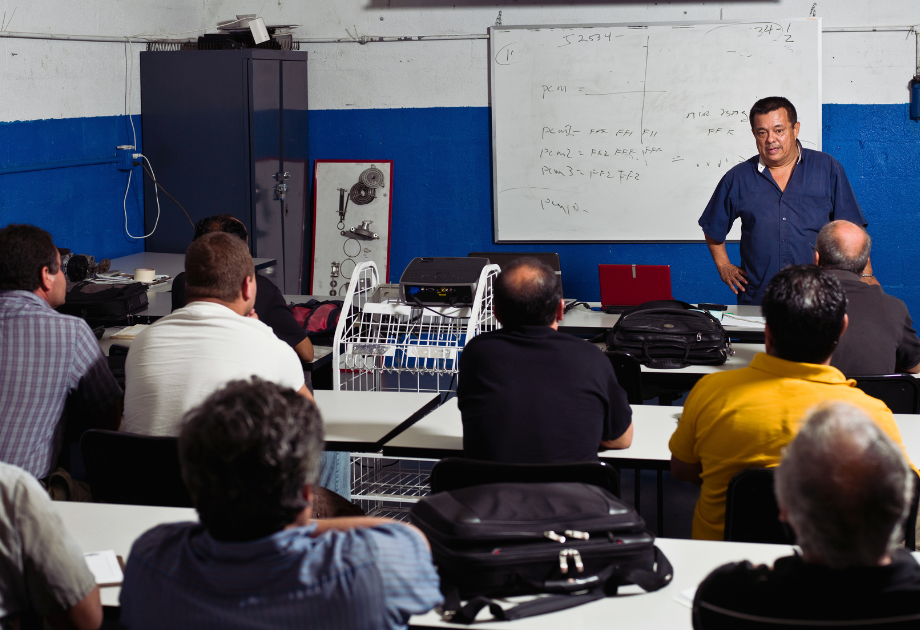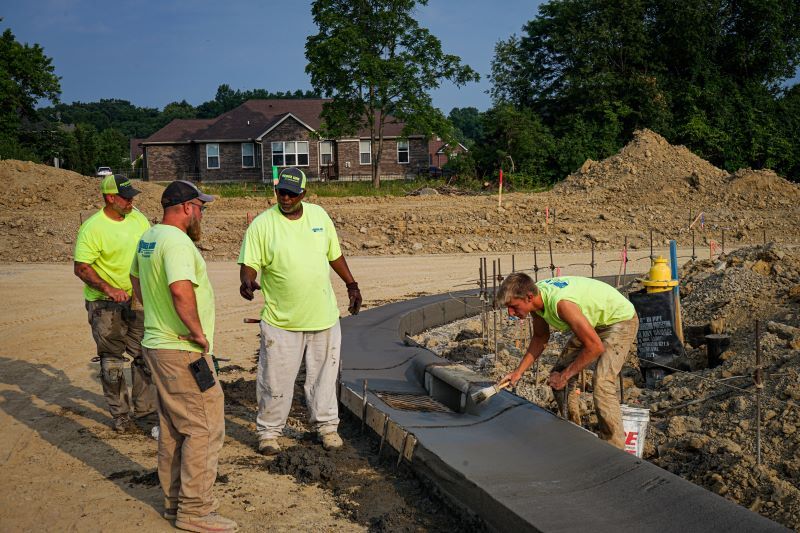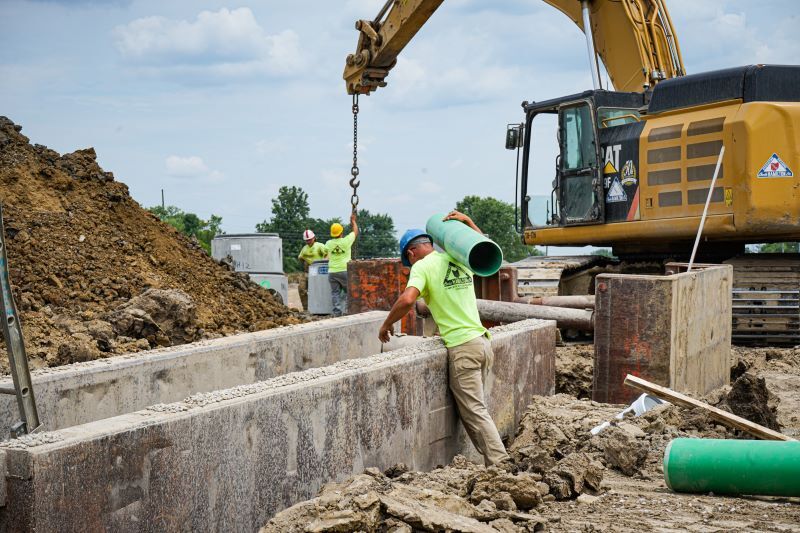Training for Construction Work the Right Way

With the construction industry facing a growing labor shortage, proper training isn’t just important—it’s the difference between a workforce that thrives and one that struggles to keep up. Skilled workers aren’t born knowing how to operate heavy machinery, read blueprints, or navigate job site hazards. They have to be trained. But what’s the best way to do it?
Construction training programs typically fall into two categories: classroom-based learning and on-the-job training (OJT). One offers structured education and industry knowledge, while the other provides real-world experience in real-time.
For employers, the right training approach shapes a workforce that can handle complex projects safely and efficiently. For workers, it determines how well they transition into a career that rewards skill and expertise.
So, which approach works best for construction risk management, safety precautions, and overall skill development? And more importantly, how does CH Hamilton set its team up for success with a training model that actually works? Read on to find out.

Can You Really Learn Construction from a Textbook?
Classroom training provides a structured way to learn construction safety topics, industry regulations, and the fundamentals of the trade. Courses in construction training programs often cover blueprint reading, compliance laws, and specialized skills like estimating and project management.
For those wondering how to get into construction, classroom learning provides a great foundation. It offers a controlled environment where mistakes won’t cost thousands of dollars in materials or pose a risk to worker safety.
According to research, 61% of workers believe training on the job is more valuable than traditional education, but that doesn’t mean classroom learning is useless. It provides an understanding of risk management plans, safety protocols, and industry best practices—critical elements in reducing workplace hazards.
The Pros of Classroom Training
Learning in a controlled environment has its advantages:
- A structured curriculum covers construction risk management, building codes, and regulatory requirements.
- Classroom learning introduces workers to industry technology, like project management software and blueprint interpretation.
- Certifications gained in classroom settings can improve job prospects and meet employer requirements.
CH Hamilton’s article, Build Your STEM Talents into a Rewarding Career in Construction, highlights how structured education creates a direct pathway into construction training programs and long-term careers.
The Downsides of Learning from a Desk
That said, classroom-based training has its limits. Workers can memorize every OSHA rule in the book, but construction site safety still relies on real-world decision-making. No classroom can replicate the unpredictability of a live job site’s needs:
- Lack of Hands-On Experience – No amount of reading can teach someone how to operate heavy machinery or navigate a busy worksite.
- Limited Problem-Solving Skills – Real-world construction jobs require quick thinking and adaptability, skills that aren’t fully developed in a classroom setting.
- Delayed Workforce Entry – Formal education programs can delay a worker’s ability to start earning money, whereas on-the-job training allows for immediate employment and skill-building.
This is where construction training needs a more dynamic approach—one that balances knowledge with hands-on experience.

On-the-Job Training: When Experience Is the Best Teacher
There’s a reason construction training programs emphasize practical learning—because construction is a hands-on profession. The best way to master safety precautions, equipment operation, and teamwork is by doing the work.
On-the-job training (OJT) immerses workers in real-world tasks, allowing them to gain construction skills while actively contributing to projects. Workers learn by shadowing experienced team members, developing risk management strategies in real-time, and understanding how to navigate a construction risk management plan in practice—not just on paper.
Why OJT Works
Practical training develops skills that can’t be learned in a classroom, such as:
- Muscle Memory & Skill Development – Operating machinery, using tools, and following construction safety topics become second nature through repetition.
- Real-World Problem-Solving – Worksites are unpredictable, and workers must learn to think on their feet to maintain construction site safety.
- Confidence Building – Hands-on experience helps workers feel comfortable with equipment and job responsibilities.
CH Hamilton’s article, Construction Careers Explained: Laborers and Operators, illustrates how workers gain valuable, job-specific knowledge through active participation.
The Challenges of Learning on Site
OJT can be inconsistent without structured oversight. Without the right guidance, there’s a risk of learning improper techniques or developing unsafe work habits, like:
- Inconsistent Training – Without structure, workers may pick up bad habits that could impact construction safety.
- Risk of Injury – A poorly supervised training experience can lead to workplace accidents, reinforcing the importance of a risk management plan.
- Lack of Standardization – Unlike classroom learning, OJT quality varies depending on mentors and job sites.
That’s why the best construction training programs combine both classroom and hands-on training to build well-rounded workers.

The Winning Formula: Blending Book Smarts and Site Smarts
Neither classroom training nor on-the-job training alone is enough to fully prepare workers for the demands of a construction site. The best approach combines both, ensuring that workers develop theoretical knowledge while also building practical expertise. A well-rounded construction training program provides the structured education necessary to understand regulations while allowing workers to refine their skills through real-world experience.
When to Prioritize Classroom Learning
Some aspects of construction require in-depth study before stepping onto a job site. Learning construction safety topics and compliance regulations in a structured environment helps workers understand legal requirements, risk mitigation, and industry best practices. Technical skills like blueprint reading and project planning also benefit from formal education, as they require precision and attention to detail.
Additionally, certifications gained through classroom training can open doors to leadership positions, helping workers advance their careers. Structured education provides a foundation that allows workers to transition into the field with confidence and technical expertise.
When to Get Your Hands Dirty
Some skills can’t be mastered by reading about them—experience is the best teacher. Operating heavy machinery, working with different materials, and responding to the unpredictable nature of a construction site all require hands-on learning. Developing construction risk management skills through real-world application helps workers build confidence, adapt quickly, and understand how to navigate unexpected challenges.
Beyond technical abilities, real-world training also reinforces teamwork, job-site communication, and problem-solving—skills that are just as valuable as knowing how to operate equipment. The article Top 10 Skills for Success in General Labor Roles emphasizes how practical experience builds well-rounded professionals who are prepared for long-term success in the field.
CH Hamilton: Where Training Meets Opportunity
At CH Hamilton, we don’t believe in a one-size-fits-all approach to training. Our method blends structured education with real-world experience, giving workers the tools they need to stay safe, work efficiently, and build lasting careers.
We provide hands-on on-the-job training, allowing workers to develop skills under the guidance of experienced mentors. Classroom-based instruction reinforces industry knowledge, ensuring that workers understand compliance regulations, technical concepts, and construction safety topics. For those looking to advance, we offer opportunities for growth through certifications and career development programs.
The Right Construction Firm for Long-Term Employment highlights how CH Hamilton invests in its team’s success, helping workers build careers with stability and advancement potential.
For those serious about building a future in construction, CH Hamilton provides the training, resources, and opportunities to make it happen. Explore current job openings on our Careers Page or reach out via our Contact Page to learn more about how we prepare our team for success.

